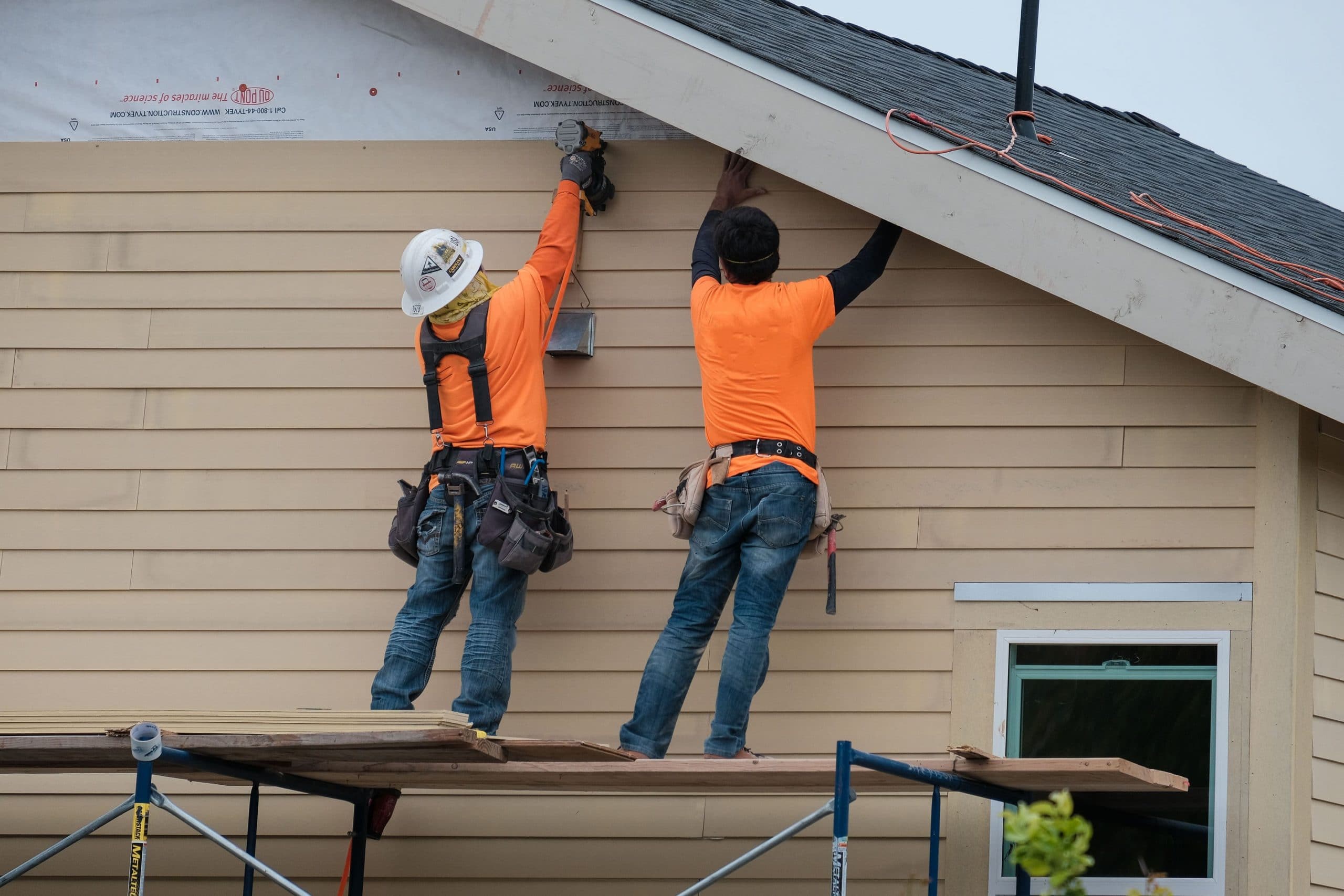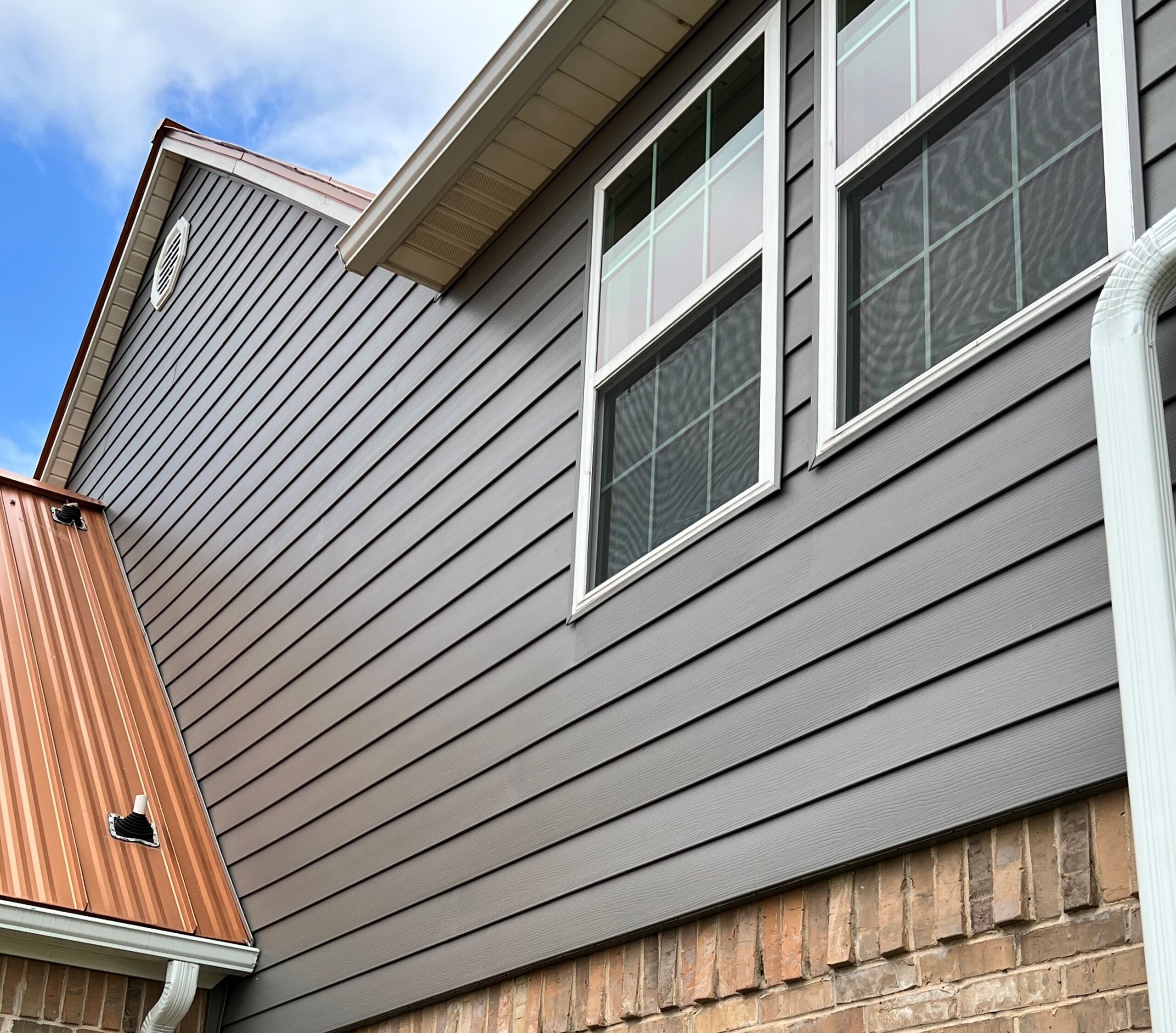Modern home siding: Selecting the Ideal Exterior Material for Your Home
Exterior siding providers: Specialist Exterior Panel Remediation Can Enhance Your Home'S Curb Appeal And Secure It From Weather Damage
Kinds Of Siding Products
When it comes to siding repair, comprehending the different kinds of siding materials can make a world of difference. Ever noticed how some homes wear their siding like a badge of honor, while others appear to fight with peeling, breaking, or warping? That's due to the fact that each product has its own peculiarities and peculiarities demand customized repairs. What are the usual suspects?
1. Vinyl Siding
Vinyl siding is often the go-to choice for lots of house owners due to its price and low maintenance. Do not let the ease fool you-- vinyl can split or end up being brittle over time, specifically in cold climates. Have you ever tapped on vinyl siding and heard a hollow sound? That's usually a sign that repairs are creeping in your future. The bright side? Fixing vinyl normally indicates changing simply the harmed panels rather than the entire wall.
2. Wood Siding
Wood siding holds a timeless appeal, evoking pictures of comfortable cabins or traditional homes. It's a double-edged sword; wetness and pests can turn this beauty into a maintenance headache. If you have actually ever spotted peeling paint or soft spots, you're taking a look at early warning signs. Addressing wood siding damage rapidly prevents rot from spreading like wildfire. Keep in mind, a little sanding and caulking can sometimes work marvels, however extensive damage might require complete plank replacements.
3. Fiber Cement Siding
Fiber cement is the chameleon of siding materials-- it simulates wood, stone, or stucco with surprising accuracy. Resilient and fireproof, it's a preferred amongst those wanting longevity. Nevertheless, its difficult outside isn't unsusceptible to cracks or chips. Repairs often involve patching and repainting, however beware: incorrect repairs can cause water seepage, the arch-nemesis of all siding. Have you ever seen a small fracture masquerade as safe, just to reveal a soaked nightmare behind the scenes?
4. Metal Siding
Metal siding, whether aluminum or steel, shines with contemporary appeal and resilience. Damages from hail or unintentional impacts can mar its surface area. Rust is another villain lurking if protective coverings use thin. Prompt repair work, including sealing and repainting, can stop corrosion in its tracks. Disregarding these signs? That's like leaving a small hole in a ship's hull and hoping it won't sink.
Typical Indications Showing Siding Repair Work Requirements
- Fractures or splits in panels
- Fading or peeling paint
- Deforming or buckling surfaces
- Soft or decomposed locations in wood
- Damages or rust spots on metal
- Loose or missing pieces
Quick Comparison Table of Siding Products
| Product | Durability | Upkeep | Repair work Complexity |
|---|---|---|---|
| Vinyl | Moderate | Low | Easy |
| Wood | Variable | High | Moderate to Complex |
| Fiber Cement | High | Moderate | Moderate |
| Metal | High | Moderate | Moderate |
Unraveling one of the most Frequent Siding Damage
Have you ever observed the subtle cracks sneaking along your home's outside, just to dismiss them as safe? Those small cracks are often the very first whispers of more significant difficulty. Weather condition's ruthless attack-- from hail to scorching sun-- can force siding to warp, split, and even decay.
Key Culprits Behind Siding Wear and Tear
- Wetness Invasion: Water sneaking behind siding panels can cause rot and mold, especially if your home's drainage isn't optimal.
- UV Radiation: Sunshine can fade colors and weaken materials, making them breakable gradually.
- Physical Impact: From roaming baseballs to tree branches, impacts leave damages or holes that jeopardize siding's stability.
- Insect Infestation: Termites and carpenter ants can calmly feast on wooden siding, leaving structural vulnerabilities.
Identifying Indications Before They Escalate
Imagine strolling previous your house and identifying a spot where the paint peels like old parchment-- what's actually happening there? Peeling paint often signals trapped moisture beneath the surface, recommending that water has actually breached the siding's protective barrier.
Another tricky indication is deforming. When boards twist or bow, it's not simply an aesthetic defect; it indicates prolonged exposure to moisture or heat. Disregarding this can welcome bugs and accelerate decay.
Expert Tips to Find and Avoid Concealed Damage
- Regular Examinations: Walk your home's boundary every season, inspecting for loose or broken panels.
- Tap Testing: A simple knock can expose hollow spots showing rot or pest activity.
- Maintain Proper Drainage: Ensure gutters direct water away from siding to decrease wetness accumulation.
- Ventilation Matters: Correct air flow behind siding prevents condensation that causes mold and rot.
The Cause And Effect of Neglected Siding Damage
Letting a minor fracture remain is like leaving a door open for undesirable visitors. Moisture, insects, and temperature level variations make use of these vulnerabilities, turning small repairs into comprehensive repair tasks. As soon as paint peels and wood warps, the underlying structure often suffers quietly, hidden from plain view however screaming in requirement of attention.
Important Tools for Accuracy in Siding Repair Work
When tackling siding repair work, the right tools change a challenging job into a workable job. Envision attempting to pry off damaged siding with a screwdriver-- frustrating, inefficient, and most likely to trigger more damage than great. Instead, a cat's paw or a specialized siding elimination tool slides below the boards with ease, sparing the surrounding product.
Here's a compact arsenal every property owner or expert ought to have:
- Energy knife: For scoring and cutting vinyl or fiber cement siding with surgical precision.
- Hammer and lever: Vital for thoroughly getting rid of nails and separating boards without splintering.
- Caulking gun: To seal gaps and avoid water infiltration, because moisture is the quiet opponent of any siding.
- Determining tape and chalk line: For exact cuts and alignment-- absolutely nothing screams 'amateur' like crooked siding.
- Power drill: Speeds up fastening and can be coupled with a range of bits to take on various siding products.
- Level: Guarantees your siding sits completely directly, preventing those subtle angles that become eyesores with time.

Products That Make or Break Your Repair work
Selecting the ideal products isn't simply about matching colors or styles; it's about longevity and compatibility. Vinyl siding replacement panels, wood slabs, fiber cement boards-- all have special attributes that demand respect.
Ever tried to spot a section with mismatched material? It resembles patching a hole in a canvas with paper-- short-term and visually disconcerting. Here's a quick rundown of what to think about:
| Material Type | Finest Usage | Key Attributes |
|---|---|---|
| Vinyl | Residential homes with moderate weather condition direct exposure | Low maintenance, colorfast, but can break in severe cold |
| Wood | Standard or rustic visual appeals | Needs routine sealing; susceptible to rot and insects if overlooked |
| Fiber Cement | Long lasting option for high-moisture environments | Fire-resistant, heavy, needs carbide-tipped tools for cutting |
Specialist Tips for Product Handling and Setup
Here's a nugget numerous ignore: always adjust fiber cement siding before setup. Let those panels being in the environment where they'll be installed for a minimum of two days. This simple step avoids warping and makes sure a tight fit.
Also, never ever ignore the power of a well-placed bead of premium exterior caulk. This can prevent the perilous creep of wetness behind the siding-- wetness that welcomes mold, mildew, and eventual structural decay.
One last thought: when getting rid of damaged siding, protect underlying insulation and sheathing. A mild touch here conserves hours of extra work and money down the line.
Step-by-Step Repair Work Process
Ever discovered a stubborn crack slipping through your siding, whispering tales of water invasion? It's not simply an eyesore-- it's an open invitation to rot and mold. Overlooking it can turn a minor repair into an enormous headache. Let's break down the process of siding repair work with accuracy and care.
1. Examination and Preparation
Don't rush to rip off panels. Begin with a precise inspection. Search read more for warping, loose nails, and concealed wetness beneath the siding. Use a wetness meter if you can-- it's a specialist's ace in the hole. Preparation means more than just clearing debris; it includes securing close-by plants and surface areas from dust and paint.
2. Getting Rid Of Broken Sections
Here's where the skill is available in. Pry off damaged sections thoroughly, preventing harm to surrounding pieces. A siding elimination tool or zip tool can make this a breeze, avoiding unneeded damage. Keep in mind, the objective is to maintain the stability of the structure underneath.

3. Cutting and Fitting Replacement Panels
Accuracy is whatever. Step two times, cut once. When cutting replacement siding, slightly bevel the edges to guarantee water sheds properly. This little detail typically gets ignored however can prevent future water damage. Stagger the seams to imitate the initial pattern for a smooth look.
4. Protecting and Sealing
Use galvanized nails to prevent rust, and never drive nails too tight; enable some wiggle room for expansion. Sealing is your final guardian-- apply a high-quality, paintable caulk around edges and joints. This obstructs wetness and keeps insects at bay. Remember, even the smallest space can become a gateway for damage.
Professional Tips
- Constantly repair siding on a dry, moderate day-- humidity can affect paint adhesion and caulk curing.
- Use a level to make sure each panel aligns completely; uneven siding is more than a visual defect-- it suggests prospective structural issues.
- Keep a replacement panel or more on hand for future quick fixes-- nothing beats preparedness.
Common Mistakes to Avoid
| Error | Why It Matters | Pro Suggestions |
|---|---|---|
| Overdriving nails | Restricts siding growth, causing buckling | Leave about 1/32 inch clearance in between nail head and siding |
| Avoiding moisture check | Missed out on water damage leads to concealed rot | Usage wetness meter before installation |
| Disregarding flashing | Water seeps behind siding, triggering decay | Check and fix flashing throughout siding replacement |
Have you ever questioned why some siding repairs stop working within months? The devil depends on the details: incorrect sealing, reckless nailing, or ignoring moisture concerns. When carried out with know-how, siding repair not only restores your home's appeal however fortifies it versus the elements for several years to come.